WINDNOISE DIAGNOSIS (INFORMATIONAL)

SUBJECT: WIND NOISE
MODELS AFFECTED: 1993 FLEETWOODS AND FLEETWOOD BROUGHAMS
This bulletin is being revised to change the Labor Operation and time for step XV. - Road Noise From Lower Rocker Area.
Customer comments regarding wind noise may be addressed by using the procedures on the individual items listed in this bulletin. Proper diagnosis may be made a variety of tools and methods including stethoscopes, dust guns, sonic instruments, visual inspections, dollar bill method, etc. It is important to remember that wind noise can best be described as air leaking from inside of the vehicle outward while traveling at highway speeds. Turbulence or wind rush is best described as air passing over and around body openings and moldings.
Prior to any repairs the front and rear door auxiliary weatherstrips and door primary opening weatherstrips should be visually inspected for proper gaps, fits, weatherstrip contact, and sealing. The vehicle should also be road tested to determine location and degree of wind noise/turbulence on the vehicle.
Refer to Service bulletin T-89-46 and Cadillac Roundtable Video RT92-2 for basic Wind Noise Diagnostic Testing Procedures. The recommended materials to be used with the following procedures are:
American Sure Seal Bedding Compound ................... P/N CGB American Sure Seal Strip Caulk (black) ................ P/N BSC GM Urethane Adhesive Kit .............................. P/N 12345633 GM Goodwrench RTV Silicone Rubber ..................... P/N 12345336 GM Goodwrench RTV Silicone Rubber Sealant ............. P/N 12345739 Kent Auto Bedding and Glazing Compound ................ P/N 10255 Kent Tracing Powder ................................... P/N 20065 3M Auto Bedding + Glazing ............................. P/N 08509 3M Ultro Auto Body Sealant (clear) .................... P/N 08302 3M Strip Caulk ........................................ P/N 08578 3M Leak Tracing Powder ................................ P/N 08951 3M Silencer Strips .................................... P/N 08585
3M and American Sure Seal, Inc. may be purchased locally.
Kent Products distribution may be obtained by calling 1-800-654-6333.
We believe these sources and their equipment to be reliable. There may be additional manufacturers of such equipment, however, General Motors does not endorse, indicate any preference for, or assume any responsibility for the products or equipment from these firms or for any such items which may be available from other sources.
I. Engine compartment noise before VIN 702545.
Engine compartment noise can be minimized by reinstalling the hood seal located on the cowl as indicated in Figure 1.
Labor Operation: B1535 Labor Time: .2 hour
II. Windshield upper reveal molding gaps to the roof of 2 mm or less, follow procedure A. (Refer to Figure 2, top illustration for gap. If gap is larger than 2mm, follow Procedure B.
Procedure A:
1. With 1/2 inch masking tape, tape the upper reveal molding all the way across the roof following the rear most edge of the reveal molding. Tape the roof at the rear edge of the molding all the way across the car.
2. Using GM Goodwrench RTV Silicone Rubber Sealer, P/N 12345739, and the nozzle from the package fill the gap between the molding and the roof.
3. Remove tape and clean any excess sealer on the molding and the body with adhesive cleaner.
Labor Operation: T3349 Labor Time: .3 hour
Procedure B:
NOTE: This procedure may require a new molding depending on difficulty of removal. Windshield upper reveal molding P/N 16616066.
Windshield upper reveal molding gaps to the roof may be corrected by following the procedure listed below.
1. Loosen and remove (partially) both RH and LH auxiliary weatherstrips.
2. Remove both windshield side reveal moldings.
3. Grasp the windshield upper reveal molding end and rotate forward while removing from cavity.
4. Remove the foam tape from the molding if present from the back side of the molding.
5. Trim the lower lip off the reveal molding as shown in Figure 2.
6. Dry fit the molding to the opening.
7. Remove adhesive from cavity, if necessary.
8. Apply urethane, P/N 12345633, into the cavity up to the bottom side of the windshield.
9. Install molding.
10. Tape the molding to the body using masking tape.
11. Allow urethane to cure overnight at room temperature before removing tape.
12. Remove any excess squeeze out of urethane from the glass and the body after tape is removed.
Labor Operation: T1939 Labor Time: .7 hour
III. Wind rush due to gap at windshield side reveal molding to glass, left and/or right side.
1. Remove auxiliary weatherstrip to access the windshield side reveal molding retaining screws.
2. Remove the retaining screws and the molding.
3. Holding the windshield side reveal molding in position, flush the molding to the glass. Determine how much elongation of the screw holes in the molding is necessary to position the molding flush to the glass.
4. Using a small rat-tail file, elongate the retaining holes in the direction and length needed to position the molding flush to the glass.
5. On the underside of the reveal molding run a bead of RTV, or equivalent, across width of molding at the lower retaining hole to fill the void between the glass and the inside surface of the windshield side reveal. Refer to Figure 3, Section A-A. Sealing this area will stop a tunneling effect up the molding.
6. Put a light film of oil on the A-pillar at the lower retaining hole to facilitate any future serviceability for removing the molding.
7. Reinstall the windshield side reveal molding and retaining screws per Section 10-2 of the Service Information Manual.
8. Using strip caulk fill the cavity at the top of the windshield side reveal molding to the upper windshield reveal molding.
IMPORTANT: Be careful not to trap the primary seal under the auxiliary seal when reinstalling the auxiliary seal.
Labor Operation: T1898 Labor Time: .3 hour .2 hour for other side
IV. Wind noise due to air leak at primary weatherstrip to door frame.
1. Adjust the door inboard to obtain necessary contact to the door frame.
V. Windshield side reveal molding gaps to door.
Adjust the door inboard so there is slight contact of the door frame along the A-pillar to the windshield side reveal molding.
VI. Front edge of the front door may be outboard slightly of the front fender.
Adjust the front edge of the front door inboard of the front fender. Flush to 1.5mm inboard. Refer to Figure 4.
NOTE: In rare instances it may be necessary to adjust the front fender outboard to obtain a proper fit.
VII. Front edge of the rear door may be outboard slightly of the front door.
Adjust the front edge of the rear door inboard of the front door. Flush to 1.5mm inboard. Refer to Figure 4.
Door Assembly Align: Labor Operation Labor Time --------------- ---------- B4000 (Right Front) .6 hour B4001 (Left Front) .6 hour B4400 Right Rear) .3 hour B4401 (Left Rear) .3 hour
VIII. Wind rush around the mirror.
Wind rush around the mirror may be repaired by inspecting two areas of the mirror for proper installation of foam gaskets.
CAUTION:
APPROVED SAFETY GLASSES AND GLOVES SHOULD BE WORN WHEN PERFORMING THIS PROCEDURE TO REDUCE THE CHANCE OF PERSONAL INJURY.
1. Inspect for proper installation of foam around the base to mirror case. You should be able to see the foam all the way around the base to the case. Refer to Figure 5 for location. If improperly installed, disassemble mirror and reposition foam. Step 2 below describes disassembly.
If by taping the bezel to the mirror case during road test resulted in a reduction of wind rush, follow procedure below.
2. Inspect for proper foam installation around the mirror case to mirror bezel. Refer to Figure 5. If the foam gasket is mispositioned, follow procedure below for removal and reposition as necessary:
a. Pull the mirror rearward to disengage it from the electric motor.
b. Remove three retaining screws from the motor and set aside.
c. Remove four retaining screws from the bezel and remove bezel from the case. The foam gasket around the mirror case should be right to the edge as shown in Figure 5. If installed improperly, carefully remove the foam and reposition it to the mirror case as shown.
d. Reinstall the bezel and motor.
e. Make sure the plastic drive screws are reinstalled to the back side of the mirror.
f. Add lube to the pivot points on the back side of the mirror.
"REMINDER": REMEMBER SAFETY GLASSES AND GLOVES!
g. IMPORTANT: WHEN REINSTALLING THE MIRROR TO THE MOTOR USING THE PALM OF YOUR HAND IN THE MIDDLE OF THE MIRROR AND PUSH FORWARD TO SEAT THE MIRROR TO THE MOTOR. YOU WILL HEAR AN AUDIBLE SNAP WHEN THE MIRROR IS FULLY SEATED. ANY OTHER METHOD OF INSTALLATION MAY CAUSE MIRROR BREAKAGE.
Labor Operation: T3350 Labor Time: .3 hour per door
IX. Wind rush due to front door window belt molding gap to front door window reveal molding. Gap between the two moldings can be seen right behind the mirror.
1. Loosen the front and rear screws of the front door belt reveal molding. Refer to Figure 6.
2. Tap the belt molding forward to close the gap to the front reveal.
3. Retorque the screws.
Labor Operation: B7840 Right, B7841 Left Labor Time: .2 hour per door
X. Wind rush due to gap condition at B-pillar seal to rear door or B-pillar molding gap to front door.
Gap condition at B-pillar seal to rear door.
1. Remove retaining screws and B-pillar seal.
2. Apply a bead of 3M Ultropro Auto Body Sealant-clear (or equivalent) to the door frame as shown in Figure 7.
3. Reinstall B-pillar seal.
B - pillar molding gap to front door
1. Adjust the front door striker inboard to obtain contact.
Labor Operation: C1600 Right, C1601 Left Labor Time: .2 hour per door
XI. Wind noise at front door window run channel to door frame.
1. Lower door glass.
2. Remove the window run channel from the retainer in the header of the door frame by pulling down and outboard on the run channel.
3. Using bedding and glazing compound, run a 5mm bead around the inboard edge of the retainer. Refer to Figure 8, Section A-A.
4. Using bedding and glazing compound fill the two cavities in the upper rear corner of the door frame. Refer to Figure 8, View A.
5. Spray window run channel with glass cleaner, for ease of installation.
6. Reinstall the window run channel, using a plastic trim stick to ensure that the run channel is fully seated in the retainer. Refer to figure 8, View C.
XII. Wind noise at rear door window run channel to door frame.
1. Lower the door glass.
2. Remove the front, top and rear portion of the run channel from the retainer from the door frame by pulling down and outboard on the run channel.
3. Using bedding and glazing compound run a 5mm bead around entire inboard edge of the retainer. Refer to Figure 8, Scction A-A.
4. Using bedding and glazing compound fill the cavities in the bracket area of the upper front corner of the door header and at the top of the division post. Refer to Figure 8, View B.
5. Spray the window run channel with glass cleaner for ease of installation.
6. Reinstall the window run channel using a plastic trim stick to ensure that the run channel is fully seated in the retainer. Refer to Figure 8, View C.
Labor Operation: T1899 Labor Time: .3 hour .2 hour each additional door
XIII. Wind noise at rear door stationary glass seal to door frame.
NOTE: There are three different areas of wind noise from the stationary glass seal.
1. Stationary glass seal to reveal molding.
Wind noise between the rubber retainer and the scalp molding may be repaired by repositioning the seal out to meet the scalp molding using a plastic trim stick. Refer to Figure 9.
Labor Operation: T3351 Labor Time: .2 hour per door
2. Misaligned division post.
Wind noise due to a misaligned division post molding to upper scalp molding may be repaired by realigning the division post as shown in Figure 10.
a. With the door trim and water deflector removed, loosen the upper and lower retaining screws and position as necessary. Reinstall the water deflector and door trim.
Labor Operation: T3352 Labor Time: .4 hour per door
CAUTION:
APPROVED SAFETY GLASSES AND GLOVES SHOULD BE WORN WHEN PERFORMING THIS PROCEDURE TO REDUCE THE CHANCE OF PERSONAL INJURY.
3. Wind noise at rear door stationary glass seal to door frame.
a. Remove the rear door stationary glass per Section 10-2-9 of the Service Information Manual.
b. Starting at the top of the division post and continuing rearward to the bottom of the stationary glass opening, apply a bead of bedding and glazing compound to the inboard edge of the retainer. Refer to Figure 11.
c. Fill the two cavities at the lower corner of the stationary glass channel with strip caulk sealer. Refer to Figure 1 1.
d. Reinstall stationary glass.
NOTE: When reinstalling stationary glass, care should be taken to ensure that the stationary glass seal is parallel with the belt line molding. The seal flap around the perimeter of the stationary glass must be outboard of the reveal molding.
Labor Operation: C0400 Right, C0401 Left Labor Time: 1.0 hour per door
XIV. Wind rush due to gap condition at C-pillar seal to rear door.
1. If greater contact cannot be achieved by adjusting the door inboard by striker adjustment, follow the procedure below.
2. Remove the C-pillar weatherstrip with a door trim removing tool. Put electrical tape on the end of the tool to protect painted surfaces.
3. Clean surface with adhesive cleaner.
4. Wipe clean with 50150 solution of isopropyl alcohol and water.
5. Surface should be at least 65 degrees Fahrenheit (18 degrees Celsius).
6. Then place 1/4 inch thick 3M ScotchFoam, P/N 4508, trimmed to 1/4 inch width and 20 inches in length. Refer to Figure 12 for location.
7. Reinstall C-pillar seal and check for contact.
Labor Operation: T3353 Labor Time: .2 hour per door
XV. Road noise from lower rocker area.
Road noise from the lower rocker area may be reduced by removing the outer sill plate and covering the three 3/4 inch holes with 3M silencer strips. The rear (door is similar but only has two holes to cover under the sill plate.
Labor Operation: T3366 (all four doors) Labor Time: .7 hours
NOTE: Individual labor allowances have been provided for each operation in this bulletin. However, the total time for all operations should not exceed 6.9 hours. The difference in total time and cumulated individual time is due to redundant or overlapping operations which are not allowed.
Parts are currently available from GMSPO.
XV. Road noise from lower rocker area.
Road noise from the lower rocker area may be reduced by removing the outer sill plate and covering the three 3/4 inch holes with 3M silencer strips. The rear door is similar but only has two holes to cover under the sill plate.
Labor Operation: T3366 (all four doors)
NOTE: Individual labor allowances have been provided for each operation in this bulletin. However, the total time for all operations should not exceed 6.9 hours. The difference in total time and cumulated individual time is due to redundant or overlapping operations which are not allowed.
Parts are currently available from GMSPO.
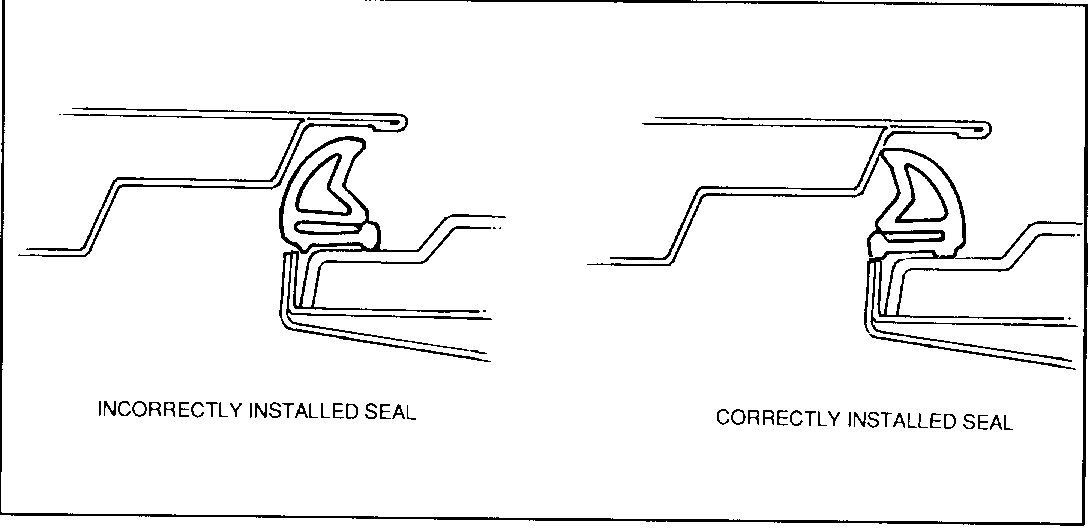
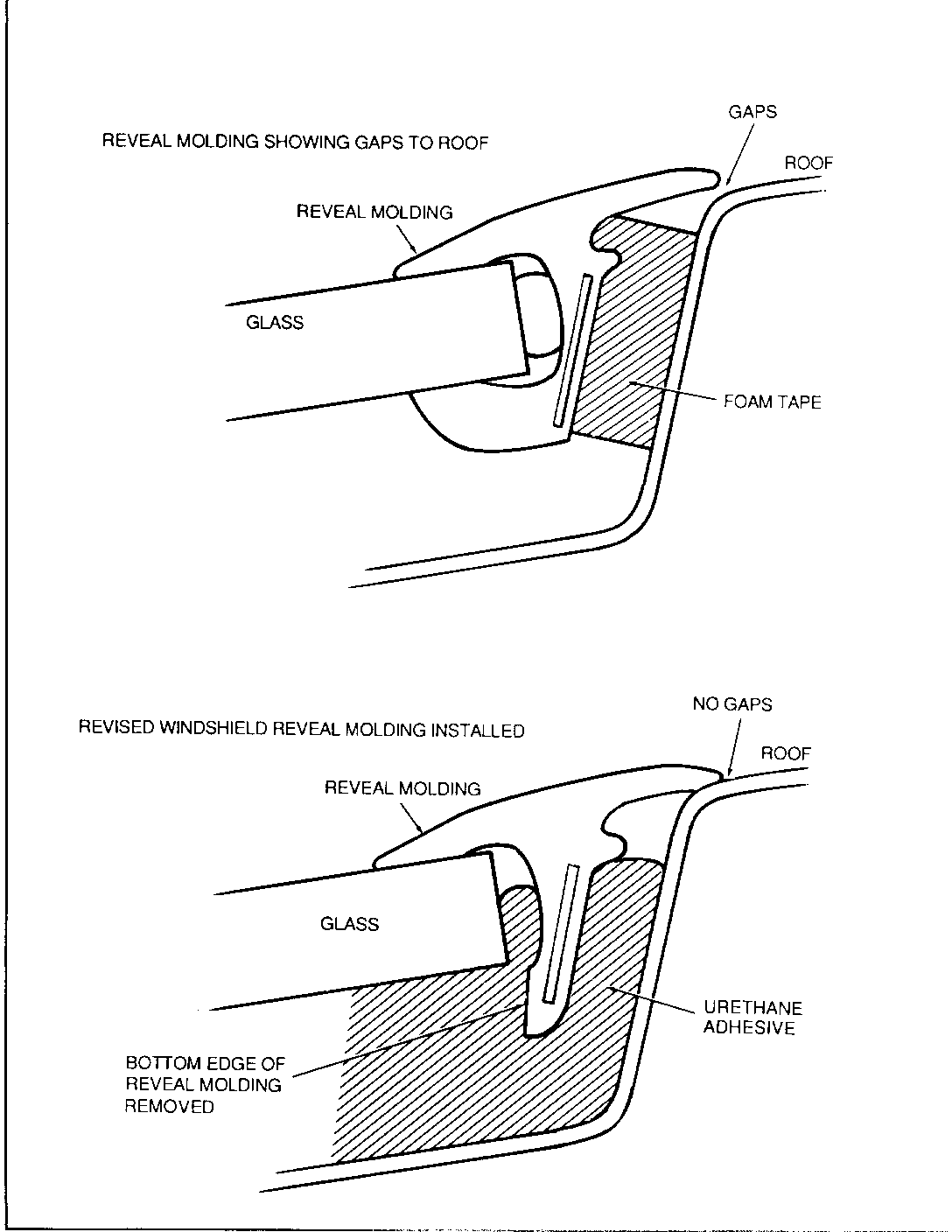
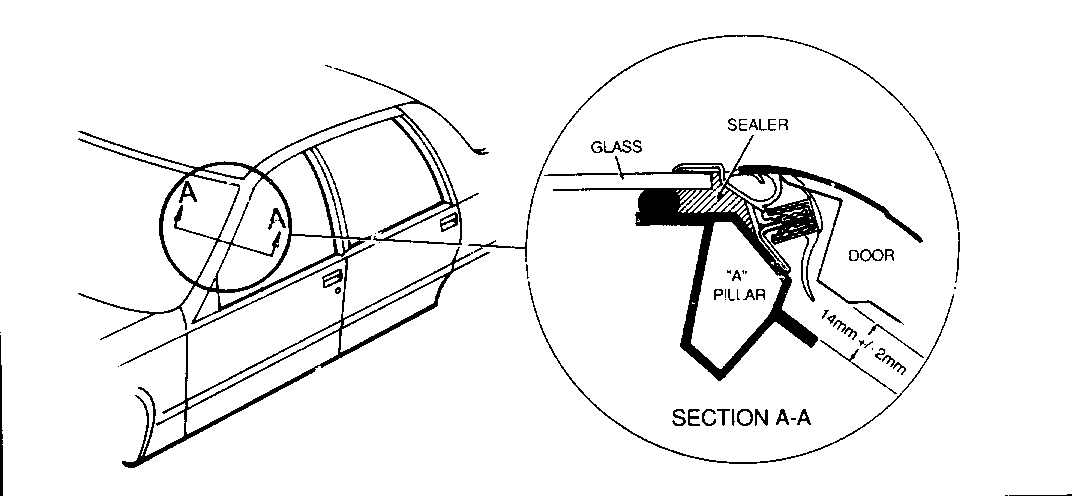
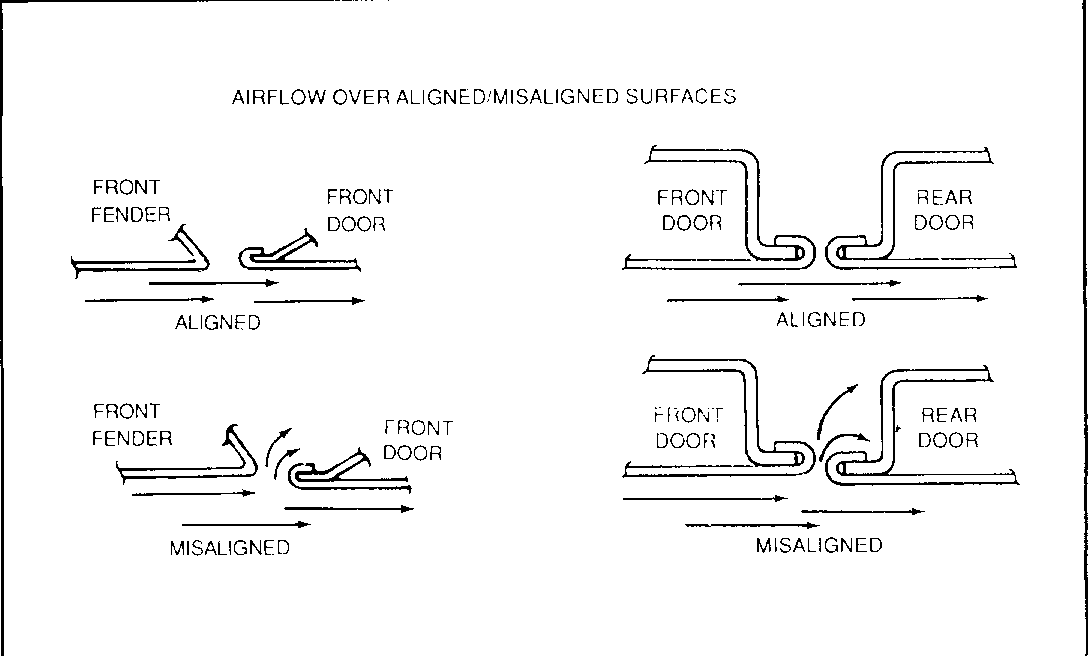
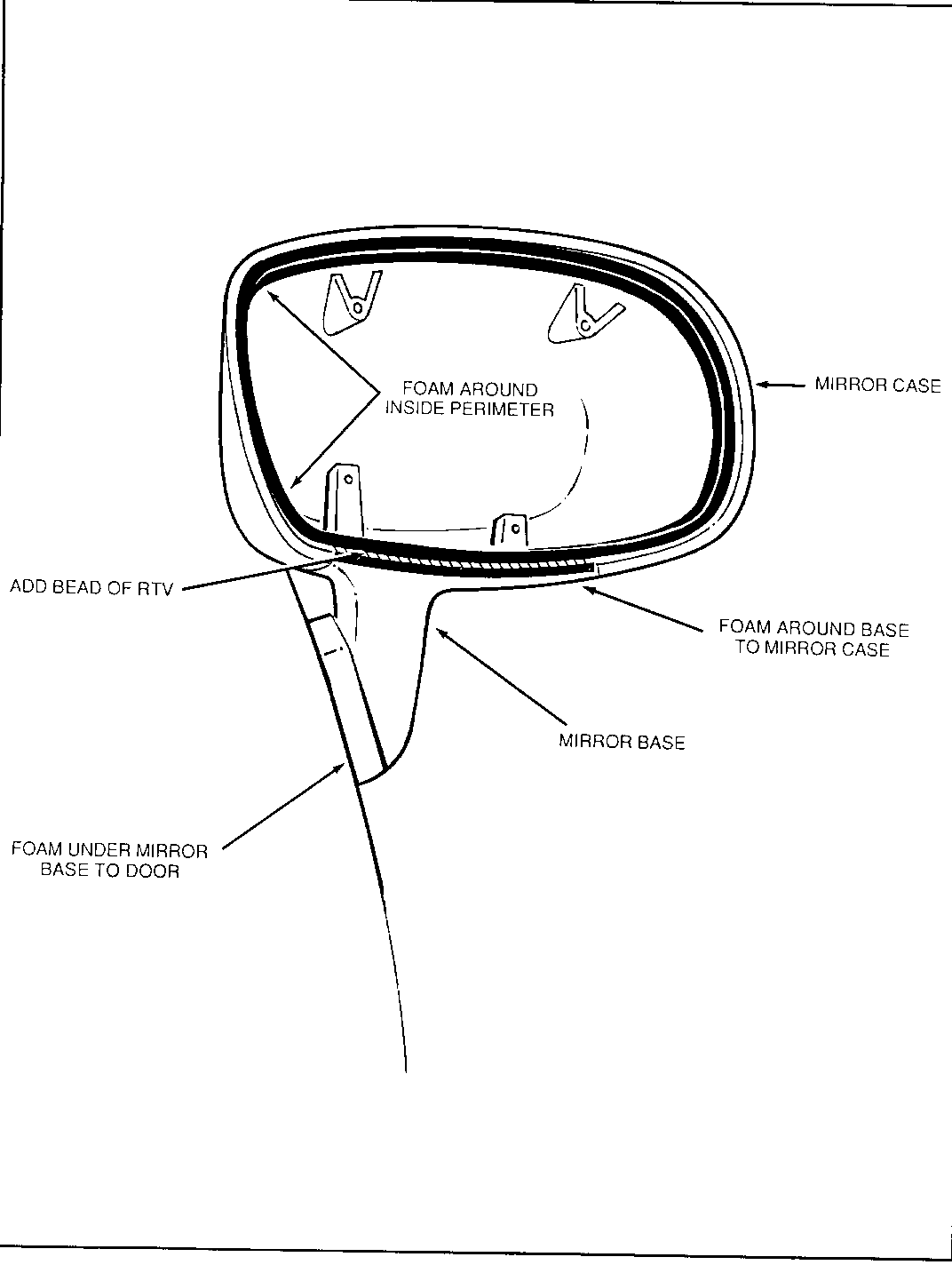
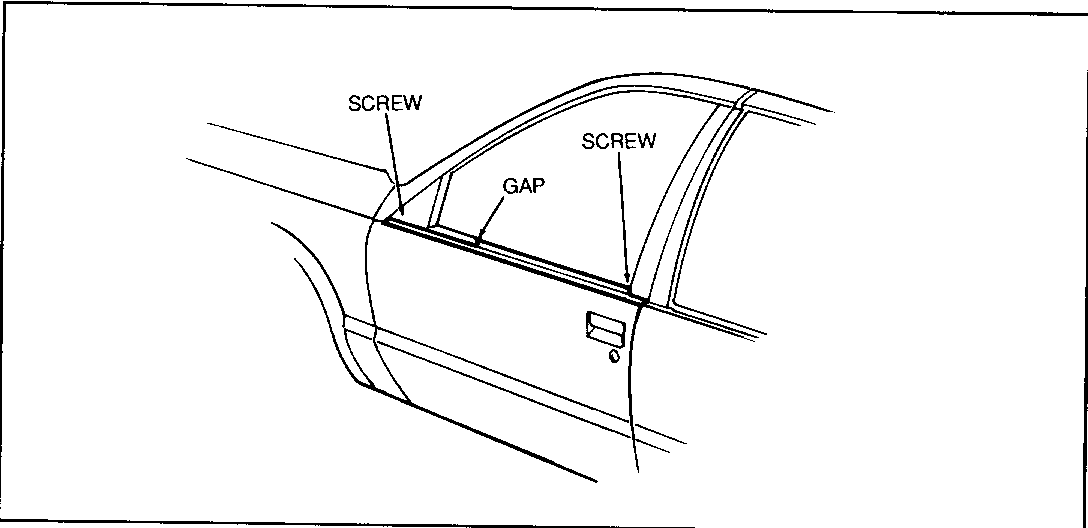
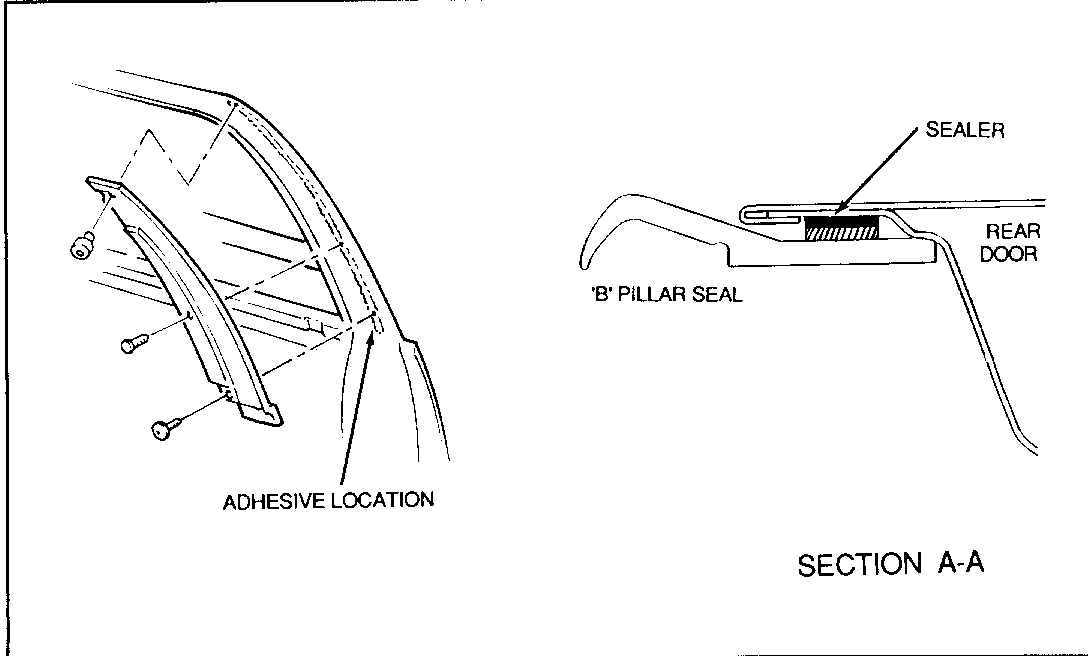
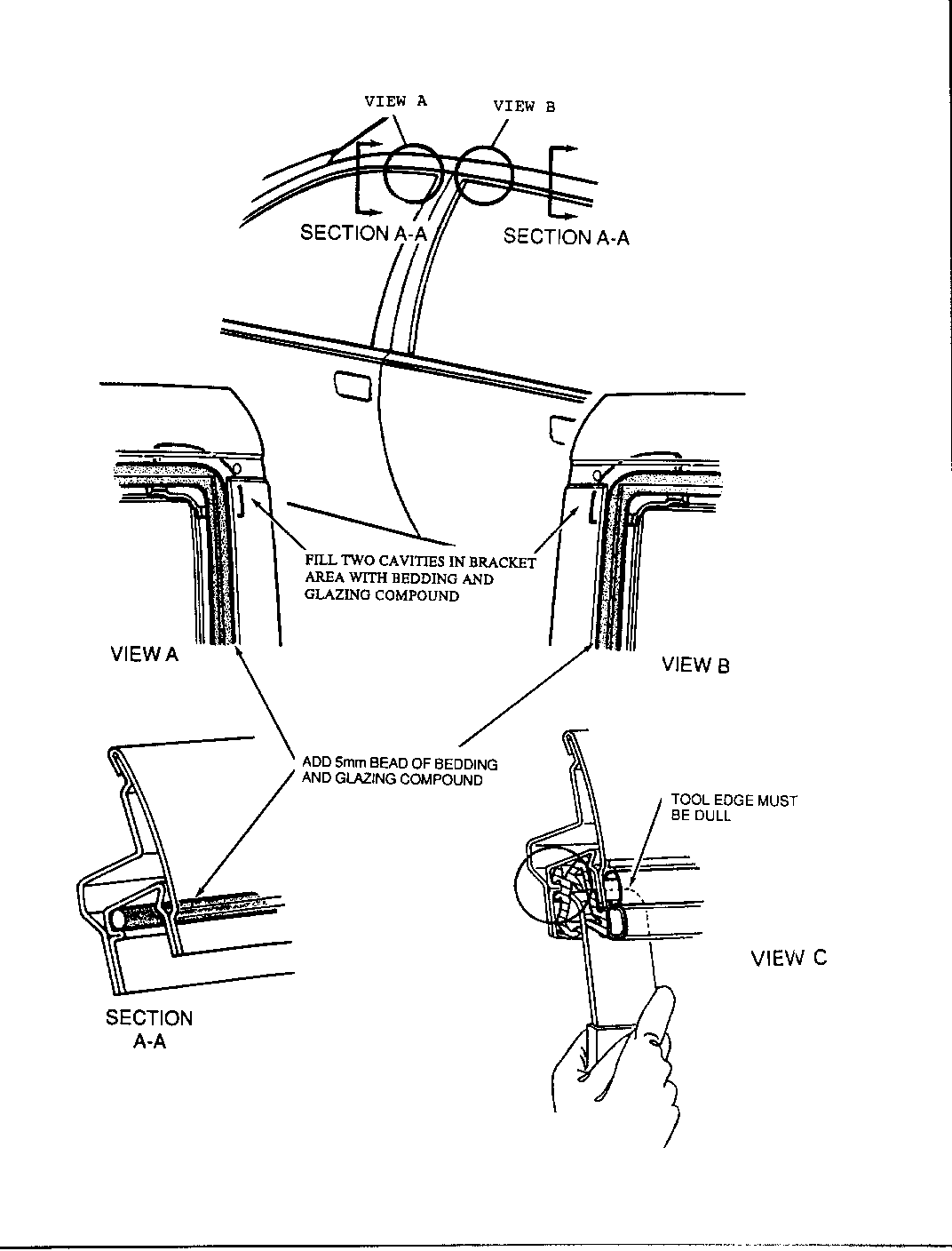

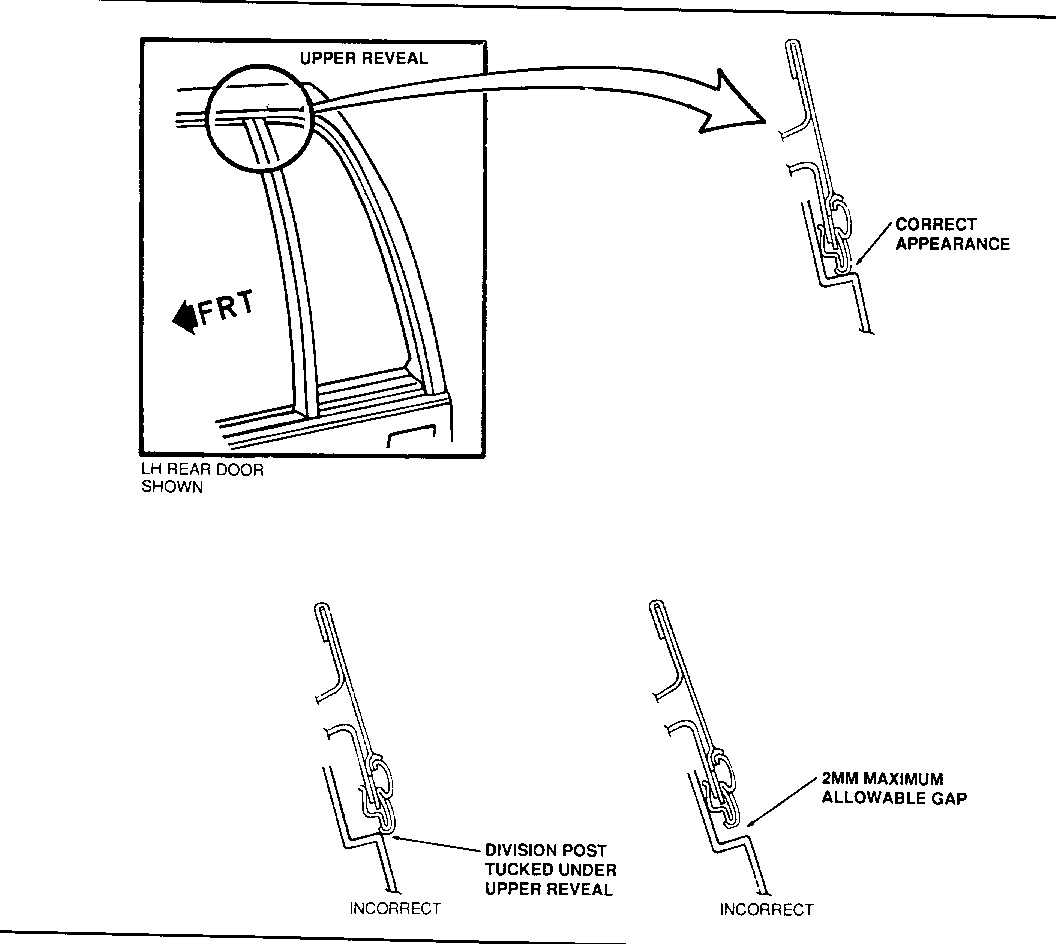
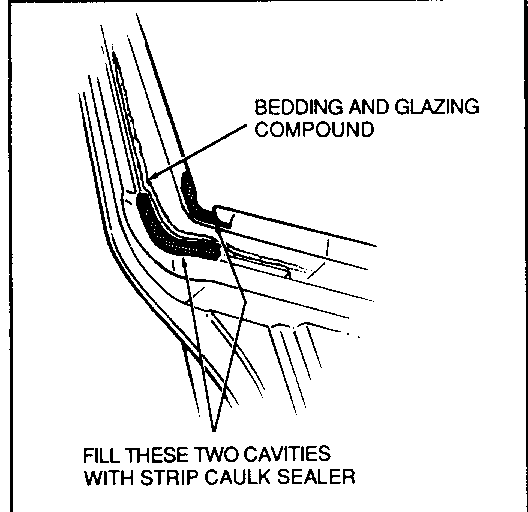
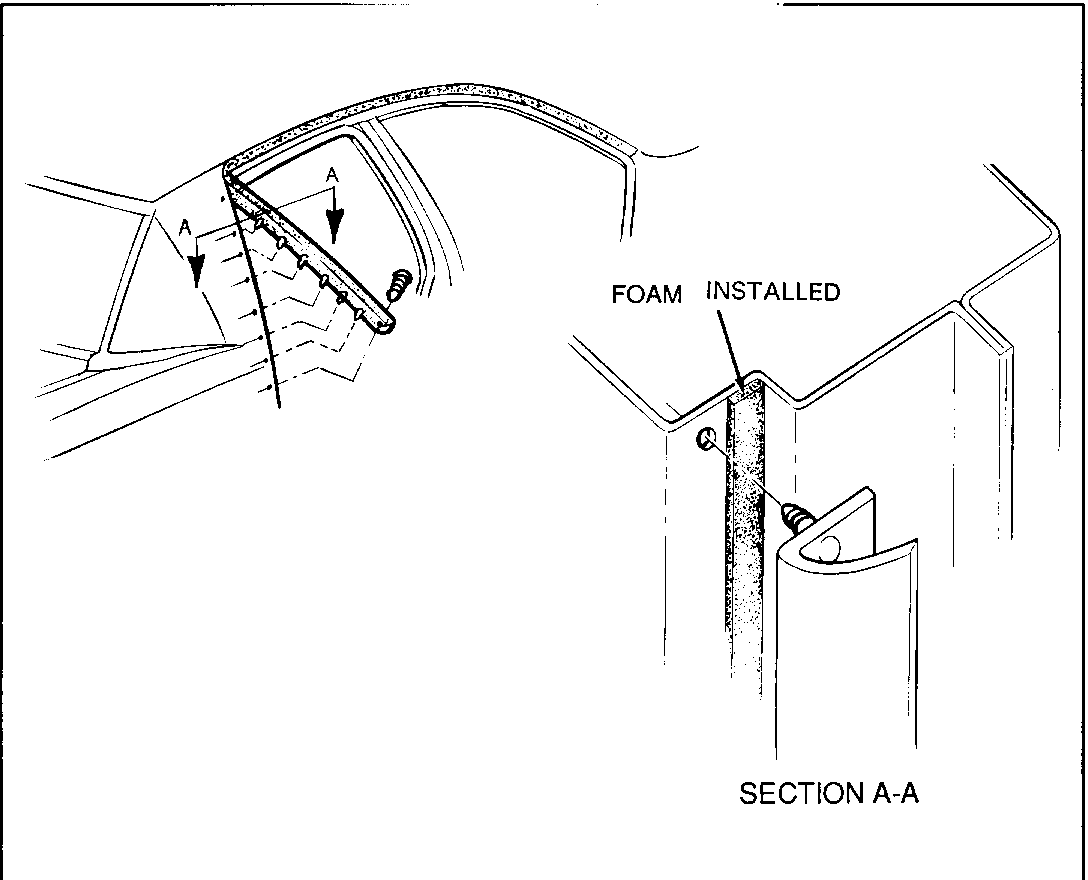
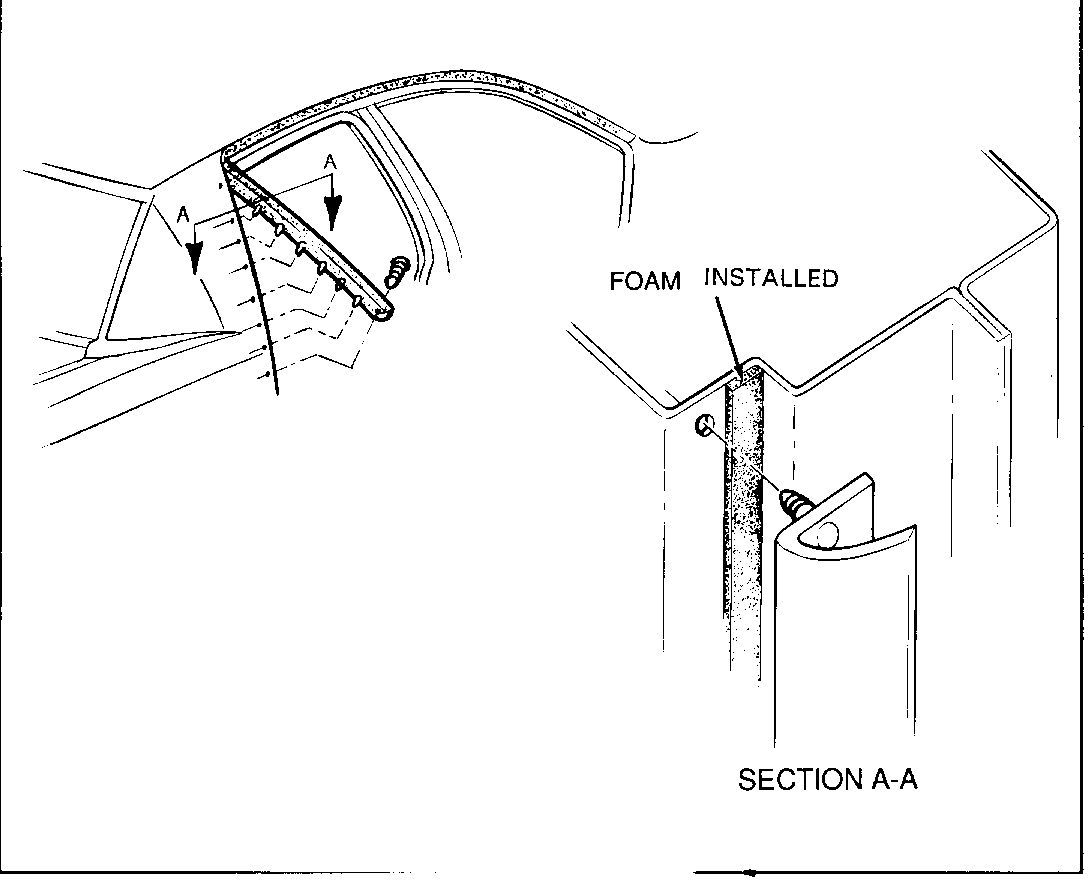
General Motors bulletins are intended for use by professional technicians, not a "do-it-yourselfer". They are written to inform those technicians of conditions that may occur on some vehicles, or to provide information that could assist in the proper service of a vehicle. Properly trained technicians have the equipment, tools, safety instructions and know-how to do a job properly and safely. If a condition is described, do not assume that the bulletin applies to your vehicle, or that your vehicle will have that condition. See a General Motors dealer servicing your brand of General Motors vehicle for information on whether your vehicle may benefit from the information.
